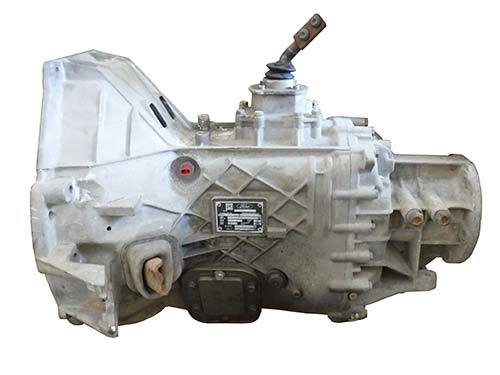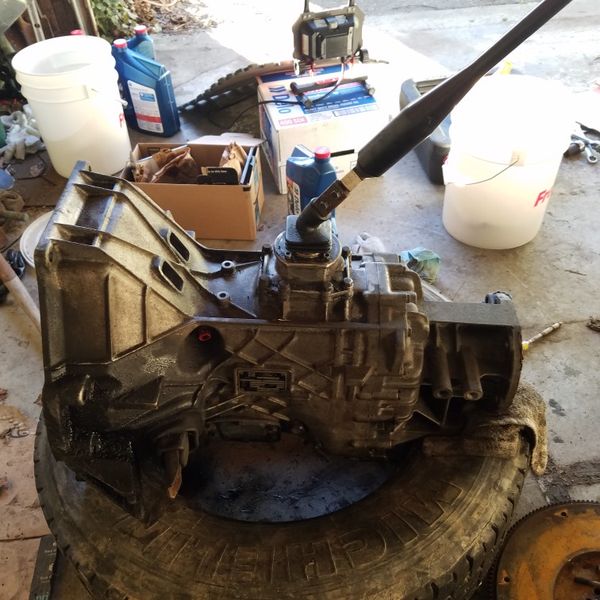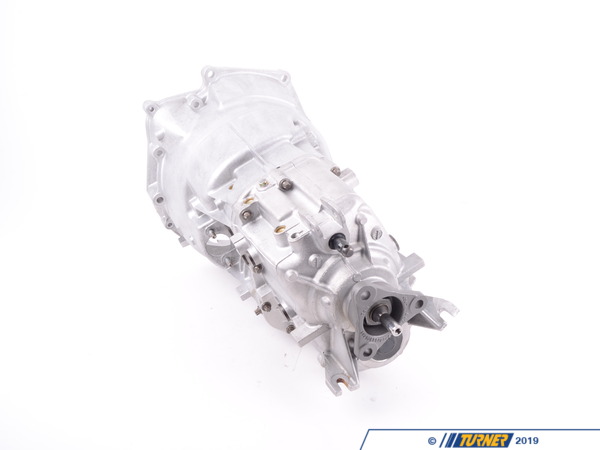ZF 5 Speed Ratios & Transmission Identification

ZF S5-42 & S5-47 Ratios



Drivetrain catalog offering discounted on Ford ZF S542 transmission repair parts, overhaul kits, major components and performance improving products plus troubleshooting help. Ford Manual Transmission 5 speed ZF-S542 Parts illustrations - drivetrain.com. The 2012-2016 DPS6 Powershift transmission was used in the 2012-2016 Ford Focus and 2011-2016 Ford Fiesta sedans. This transmission is the subject of a massive number of lawsuits alleging Ford lied in order to sell cars Ford knew had defective transmissions. 2008-present 6DCT450 Ford Powershift (MPS6) 6-speed wet clutch. ZF 5 speed 4WD transmissions are supplied with the 6 bolt circular pattern. It will have a 31 spline output shaft. 31 spline has been Ford full-size standard, used on Ford NP203, NP205, NP205, BW1356, NP271 and other transfer cases. These transfer cases will bolt up directly to a ZF 5speed. ZF Transmission Data Summary S5-42 Gas Units. New, used and manufactured ZF Transmissions and ZF bearing kits, for all makes and models. We can rebuild any model ZF transmission. ZF 5 and 6 speed Transmissions. ZF 4×4 and 4×2 transmissions in stock and ready to deliver. Contact us for ZF parts and service.
Model/Type | 1st | 2nd | 3rd | 4th | 5th | R |
S5-42 Close Ratio | 4.14 : 1 | 2.37 : 1 | 1.42 : 1 | 1.00 : 1 | 0.77 : 1 | 3.79 : 1 |
S5-47 Close Ratio | 5.08 : 1 | 2.60 : 1 | 1.53 : 1 | 1.00 : 1 | 0.77 : 1 | 4.66 : 1 |
S5-42/S5-47 Wide Ratio | 5.72 : 1 | 2.94 : 1 | 1.61 : 1 | 1.00 : 1 | 0.76 : 1 | 5.24 : 1 |
Both the S5-42 and S5-47 transmissions have been offered in close and wide ratio variations. While the wide ratio versions of the S5-42 and S5-47 feature identical ratios, the close ratio S5-42 contains a much taller 1st and reverse gear ratio in addition to a slightly different spread in between. The S5-47 is a heavier duty version of the 42, but is otherwise interchangeable so long as the transmissions originate from a diesel application. However, it is not advised to replace a S5-47 with a weaker S5-42; replacing a S5-42 with a stronger S5-47 presents no such problems. The greater strength of the S5-47 is attributed in part by a refined case design (smoother transitions and therefore less stress concentration points) and revised synchronizers. Many, if not most part numbers for internal components are the same for both transmissions. It's worth noting that the wide ratio S5-42 and S5-47 were offered in gas engine applications and are not interchangeable with diesel engine versions of the transmission.
Zf5 Transmission Swap
ZF S5-42 & S5-47 Transmission ID
In order to identify your transmission model and gear ratio spread, locate the transmission identification tag on the driver's side of the transmission.
Zf5 Transmission Swap Kit
From the transmission ID tag, you will be able to distinguish the transmission model (S5-42/S5-47) and 'Total Ratio', which will identify whether the transmission is a wide or close ratio model. The ID tag may appear different than that in the figure above depending on model year.
ZF 5 Speed Specs
Transmission: | ZF S5-42 & S5-47 | |
Type: | 5 speed manual transmission | |
Manufacturer: | ZF Friedrichshafen AG | |
Predecessor: | BorgWarner T-19 | |
Model Years/Applications: | ZF S5-42 | 1987 - 1994 Ford diesel (6.9L/7.3L IDI, 7.3L Power Stroke) |
ZF S5-47 | 1995 - 1997 Ford diesel (7.3L Power Stroke) | |
Synchronized: | Synchronized in all forward gears & reverse | |
Case Material: | Aluminum | |
Max Input Torque: | ZF S5-42 | 420 lb-ft |
ZF S5-47 | 470 lb-ft | |
Max GCWR: | 26,000 lbs | |
Weight: | ~ 175 lbs | |
Oil Capacity: | 3.2 liters, 3.38 quarts | |
Fluid Type/Spec: | Motorcraft MERCON V ATF(replaces previous MERCON ATF spec) | |
Features: | • Dual PTO provisions, driver and passenger side of transmission • S5-42 - Synchronized, 5 speed, 420 lb-ft maximum nominal input torque • S5-47 - Synchronized, 5 speed, 470 lb-ft maximum nominal input torque • ZF equipped vehicles utilize a dual mass flywheel in order to suppress engine harmonics (and the resulting noise) through the transmission. | |
Shift Pattern: | ||
Common Problems & Troubleshooting
In all diesel applications, the ZF 5 speed utilizes a hydraulic clutch actuation system, which is comprised of a clutch master cylinder, clutch slave cylinder, and a hydraulic clutch line connecting the two components. Depressing the clutch actuates a piston in the clutch master cylinder which pressurizes fluid in the system. The pressurized fluid causes subsequent movement of the clutch slave cylinder pushrod, which extends against the clutch fork and disengages the clutch. The system is similar in principle to a typical hydraulic brake system, where depressing the brake pedal subsequently forces the brake caliper pistons to extend against the brake pad.
The hydraulic clutch system on Ford pickups is extremely fastidious and sensitive to wear. Transmission grinding, rough engagements, or other conditions in which it may feel as though the clutch is not disengaging completely are often associated with one of or a combination of the following problems:
• Excessive flexing of the firewall around the master cylinder when the clutch pedal is depressed (Ford offers a repair kit for such conditions which reinforces the firewall at the clutch master cylinder).
• Worn clutch pedal assembly and/or pedal bushings. This problem is most prominent on 1987 to 1991 model year Ford pickups, which feature an aluminum pedal assembly bracket and relatively small bushings. 1992+ model year pickups feature a steel pedal assembly bracket and much larger, more robust bushings. In extreme cases, the pedal bracket assembly (sometimes referred to as the pedal box) may crack or wear and need to be replaced in order to irradiate the problem.
• Worn clutch master cylinder pushrod eye bushing. This is the bushing that sits in the eye of the pushrod where the clutch pedal swing arm pin is installed. When the bushing wears, excessive play in this joint prevents full engagement of the clutch when the pedal is depressed.
• Master/Slave cylinder leaks and/or air in the hydraulic system. Even a slight amount of air present in the system will significantly reduce clutch throw. Prior to diagnosing possible transmission problems, ensure the system is bled completely (this can be difficult at times and takes persistence).
While these are not always the culprit in transmission problems, they account for a large percentage of rough engagement and gear grinding conditions. Before further diagnosis, we highly recommend these areas be thoroughly inspected and any worn parts replaced. The clutch slave cylinder requires a minimum 7/16' of travel for proper clutch actuation, which does not provide a great deal of room for error. Performing the Heim Joint Mod (see link for details), which eliminates the clutch master cylinder pushrod eye bushing, is highly recommended and eliminates/prevents many of the problems associated with the clutch pedal/hydraulic clutch system on 1988 to 1997 Ford trucks.
Problem/Condition | Possible Cause(s) |
Transmission noise at idle/low engine speeds in neutral | This is called 'rollover' noise and is common to experience with the transmission in neutral. The cause is engine harmonics transmitted through the transmission. Rollover noise should be minimal on engines equipped with a dual mass flywheel. For single mass flywheels (flywheel has been converted from DMF to SMF) some noise is completely normal and should disappear when driving in gear. |
Difficult engagement and/or grinding with clutch fully depressed | Clutch not fully disengaging - inspect master/slave cylinder for proper actuation (minimum 7/16' slave cylinder travel), inspect pedal assembly bushings for wear, inspect master cylinder pushrod bushing and clutch pedal swing-arm for excessive wear, inspect firewall for excessive deflection when clutch pedal is depressed. If hydraulic system is functioning properly and the aforementioned components are in good condition, problem may be worn synchronizers. |
Transmission jumping out of reverse | Worn reverse synchronizer - synchronizer is not fully engaging and therefore jumps out of gear once load is applied. Try double clutching when going into reverse in order to avoid false reverse engagement. |
Notchy shifting (no grinding) | Clutch not fully disengaging - inspect master/slave cylinder for proper actuation (minimum 7/16' slave cylinder travel), inspect pedal assembly bushings for wear, inspect master cylinder pushrod bushing and clutch pedal swing-arm for excessive wear, inspect firewall for excessive deflection when clutch pedal is depressed. If transmission shifting is notchy only when transmission is cold, this is typically normal. Check master cylinder fluid reservoir level. |
Growling or squealing noise when clutch is fully depressed | Throwout bearing likely worn and/or requires replacement. |
Gear grind, rough engagements in cold weather | Rough engagements, slight grinding between gear shifts, and sluggish transmission shifting characteristics are normal and to be expected from both the S5-42 and S5-47 transmissions when cold. If condition irradiates itself once transmission is warm, it should not be cause for concern. If problem persists when transmission is warm, see conditions above. |
Transmission noise in one particular gear | Worn, chipped, or otherwise faulty gear set. |
Transmission exhibits rattle noise when taking off at low RPM | This is typically experienced when lugging the engine from a standstill - run engine at higher RPM while taking off. |
Rough engagements, gear grinding after master/slave replacement | Air present in hydraulic clutch system - bleed system completely before troubleshooting further. |
Transmission will not go into a particular gear or series of gears | Worn shift rail(s) and/or gear shift mechanism, worn synchronizers. |
For the 8-speed automatic transmission, ZF set out to design and develop an entirely new gear set concept. The result is a revolution in transmission design: a transmission concept with 4 gearsets which requires only 5 shift elements – of which only two are open in any given gear. The 8HP also requires no more than 3 multi-disk clutches and 2 brakes, which allows it to achieve a greater degree of efficiency than other concepts. As a result of the fact that only 2 shift elements are open per gear, drag losses in the transmission are sustainably reduced. This effect is supported by the use of a new parallel-axis vane-type oil pump. 4 A torque range from 300 to 1000 newton meter makes the 8HP the perfect partner for all rear-wheel-drive and all-wheel-drive designs. From the lower midsize segment to sporty luxury cars, and in every type of SUV and offroad vehicle – its revolutionary design is always an efficient and economical solution. Although the 8HP features 2 more speeds than the extremely successful 6HP, the dimensions have remained unchanged and the weight was even reduced by 3% to 87 kg (transmission modular system 8HP70) including oil. At the same time, the total transmission ratio spread of 7.0 ensures that the engine is always in its optimum operating range. This translates into improved acceleration and reduced fuel consumption.
Zf5 Transmission 4x4
Based on a really successful product, it combines dynamics and comfort with improved efficiency – also with regard to the costs. And it is ideally equipped for even stricter fuel consumption and CO2 emission regulations. In the premium and mid-size car range, the optimized 8HP product family enables the average fuel consumption to be cut by another 3%. CO2 emissions decrease to the same extent. These potentials can also be completely transferred to hybrid drives. Incidentally, additional savings potential by a further optimized startstop function is not yet included here. To achieve these innovations, ZF engineers have optimized some details. Thus, the reduction of drag torques and engine speeds further reduced the already very low power losses. Essential success aspects are the higher transmission ratio spread and the reduction of system pressures in many areas. Another factor is the multidisk separation of the brakes. Furthermore, advanced torsional vibration dampers enable a faster bypassing of the hydrodynamic power transmission and therefore further reduction in speed. Thus, the new 8HP is perfectly prepared for use with the new engines (3-8 cylinders) which will determine the trend of the years-to-come.
